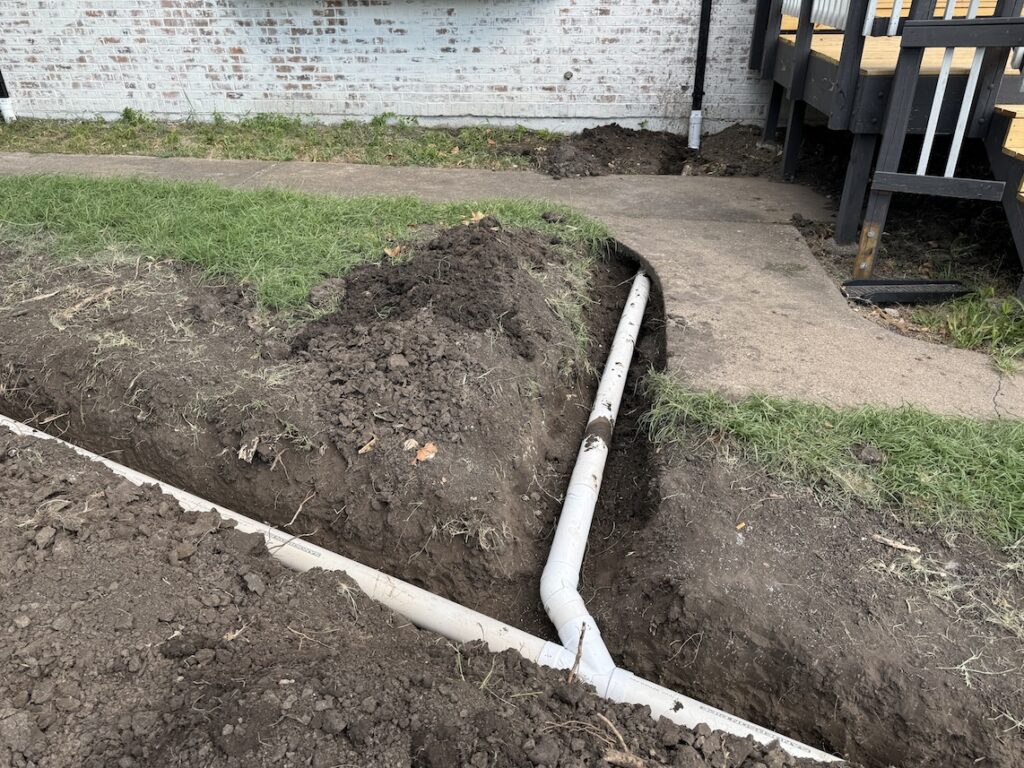Specializing in Stormwater Drainage Solutions
Are Gutters Enough, or Do You Need a Drainage System Too?
The often-missed part when installing gutters...
Gutters are an essential feature of most homes, designed to protect the structure by channeling rainwater away from the roof and walls. However, while gutters are critical for managing roof runoff, they are often insufficient on their own to fully protect a property from water damage. A comprehensive drainage system is often necessary to ensure that rainwater is effectively directed away from the foundation and surrounding landscape. This blog post explores the roles of gutters and drainage systems, their limitations, and why they often need to work together to provide complete protection against water-related issues.
The Role of Gutters
Gutters are installed along the edges of a roof to collect rainwater and direct it to downspouts, which funnel the water away from the structure. By preventing water from cascading off the roof, gutters reduce the risk of erosion, protect the siding, and minimize the likelihood of water pooling near the foundation. In essence, they are the first line of defense against water damage.
However, gutters have limitations. Even with properly installed and maintained gutters, water that exits the downspouts can still cause issues if it is not directed far enough away from the home. Without a way to manage the water after it leaves the downspouts, pooling and soil saturation near the foundation can occur, leading to foundation cracks, basement flooding, or mold growth.
The Need for a Drainage System
A drainage system complements the function of gutters by managing the water once it reaches the ground. There are various types of drainage systems, such as French drains, surface drains, or simply grading, all of which are designed to channel water away from the property and prevent saturation of the soil near the foundation.
Drainage systems address problems that gutters alone cannot solve, including:
Water Pooling: Rainwater exiting downspouts can collect in low-lying areas, leading to standing water that can attract pests and damage landscaping.
Foundation Protection: Excess water near the foundation can seep under the house or into a basement and weaken the structure over time.
Flood Prevention: In areas with heavy rainfall, a drainage system helps handle the large volumes of water that gutters may redirect but cannot completely disperse.
Integrating Gutters and Drainage for Comprehensive Protection
For maximum protection against water damage, gutters and drainage systems should be integrated into a single, cohesive strategy. This involves extending downspouts to lead water several feet away from the house, installing underground pipes or French drains to guide the water further, and ensuring proper surface grading to keep water flowing away from the foundation.
For example, in areas with heavy rainfall, underground drainage pipes connected to downspouts can efficiently transport water far from the property. In addition, adding rain barrels or dry wells can prevent water from overwhelming the system, especially during storms.
Situational Considerations
The necessity of a drainage system depends on several factors, such as local climate, soil type, and property layout. In arid regions, gutters alone may suffice because rain is infrequent. However, in areas with heavy rainfall or poorly draining soil, a drainage system becomes a critical addition to prevent water damage.
Similarly, homes built on a slope may experience natural drainage that reduces the need for additional systems, while properties on flat terrain may require extensive drainage solutions to avoid water accumulation.
Conclusion
While gutters are a vital component of water management for any home, they are rarely sufficient on their own. A well-designed drainage system is often needed to handle water after it leaves the gutters, ensuring it is directed safely away from the property. By integrating gutters with an appropriate drainage strategy, homeowners can protect their investments and avoid costly water damage. In short, having gutters is a great start, but effective drainage is the key to comprehensive water management.
Photos of different downspout drainage ideas:






